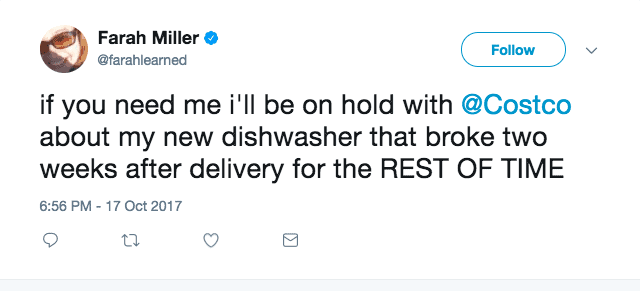Ready to build better conversations?
Simple to set up. Easy to use. Powerful integrations.
Get free accessReady to build better conversations?
Simple to set up. Easy to use. Powerful integrations.
Get free accessThere is no symphony of music sweet enough or sequence of messages smart enough to make 20 minutes of queue time feel acceptable to your customers.
In fact, two out of three will hang up the phone if a human hasn’t responded to their call within two minutes.
And you don’t need me to explain the consequences of those abandoned calls. They either damage relationships with the customers you do have or prevent you from attracting new ones.

But what can you do to drive queue times down when your hiring budget isn’t going up?
Maybe more than you think. Here are three tactics to try with the team you already have.
Study The Current Situation
You’ll never find a solution to a problem you don’t understand. So no matter how urgent your queue time troubles feel, the first thing to do is take two steps back.
Start by looking at your call volumes and wait times from the past few months.
This data will give you a helpful point of comparison against current industry standards and future team performance. And more often than not, you’ll uncover at least a few patterns worthy of additional investigation.
Think about what kind of events and behaviors could have caused the spikes you saw in the data. Was there a consistent theme to the calls received during those times?
The diligent tagging and note taking habits you’ve (hopefully) ingrained in your team can really pay off here.
In addition to performing reflective analysis, though, it’s also important to build real-time awareness. Exhaustive research isn’t feasible or helpful when emergencies strike.
In those moments, a simple dashboard with your most important indicators will put you in better position to make impactful decisions.
Consider The Entire Customer Experience
A crowded call queue is a symptom of something gone wrong somewhere else in the business. Customers only turn to support lines after the seeds of confusion or frustration were planted at a separate touchpoint.
Marketing and Sales staff might share some of the responsibility. Any incomplete or misleading information they provide at the start of the customer experience often results in a support inquiry in the end.
Product teams could also be adding to the call queue with flawed designs or ineffective instructions. Or maybe Operations built a billing system that’s unnecessarily complex.
Whatever the case may be, support teams need to consistently share customer feedback across the organization. It’s the only way you’ll be able to inspire progress in other departments.
But while you wait for those “front-end” improvements to arrive, take a closer look at the touchpoints you truly control.
Can customers really get all they need to know from your knowledge base?
Are there other support channels you don’t offer that customers might prefer?
Does everyone on the team know your crisis communications plan?
Opportunities to proactively prevent or deflect support calls could be sitting in plain sight.
Redirect and Redistribute
Not all support inquiries can be avoided, of course. Eventually, you need to focus on finding smarter ways to handle the calls you’ll inevitably have.
The first element to eliminate from your queue is dead air. No caller is going to sit through multiple minutes of dial tones. Greeting customers with an interactive menu instead creates immediate engagement and gives them a sense of control over their experience.
In addition to making your queue time feel more tolerable, a good IVR system can also tangibly reduce it. Routing callers to the most relevant teams and qualified agents will promote faster resolutions, ultimately reducing the wait for whoever is next in line.
You should also consider building peak-volume contingency plans. All too often, queue time on one support line needlessly spikes because agents assigned to other lines aren’t allowed to help.

Creating backup teams and applying “all-hands-on-deck” ring patterns will ensure every available resource is utilized when the pressure hits. (And if you have the real-time awareness we discussed earlier, you’ll know the exact right time and place to shift those resources.)
Finally, you need to account for the fact that some callers have no queue time tolerance at all. Use their impatience to your advantage and give them the option to request a call back instead.
This courtesy will satisfy them while simultaneously making the wait time one person shorter for anyone committed to staying in your queue.
Published on October 24, 2017.




